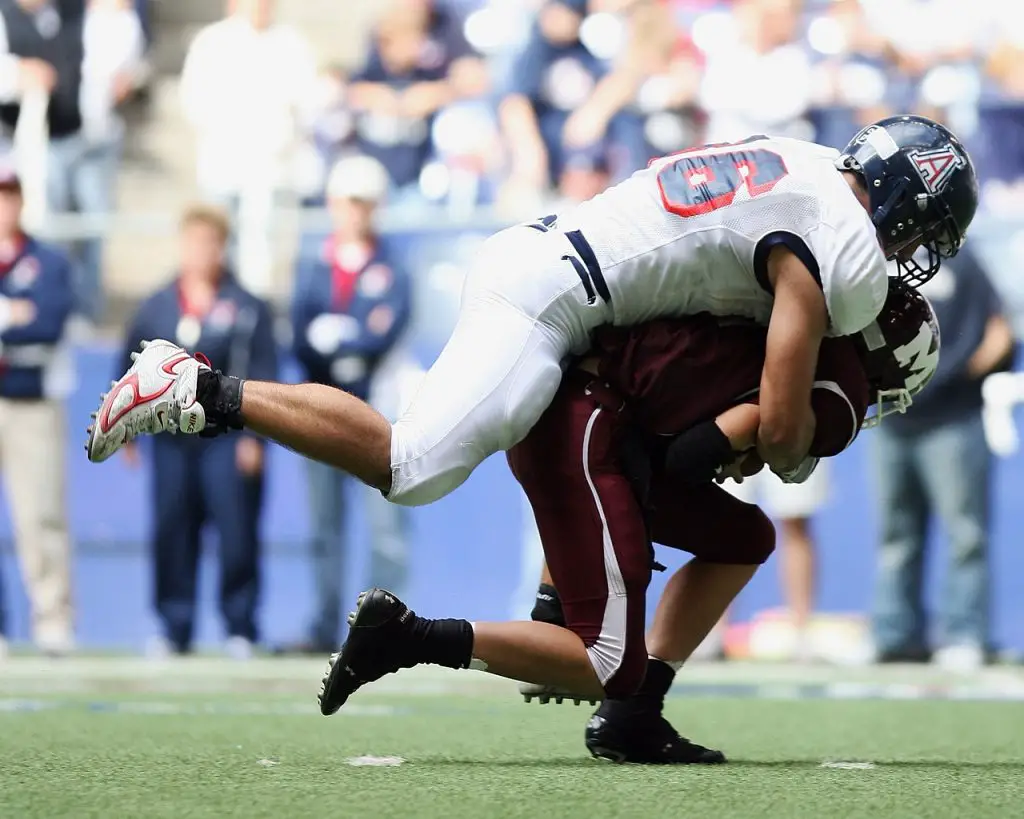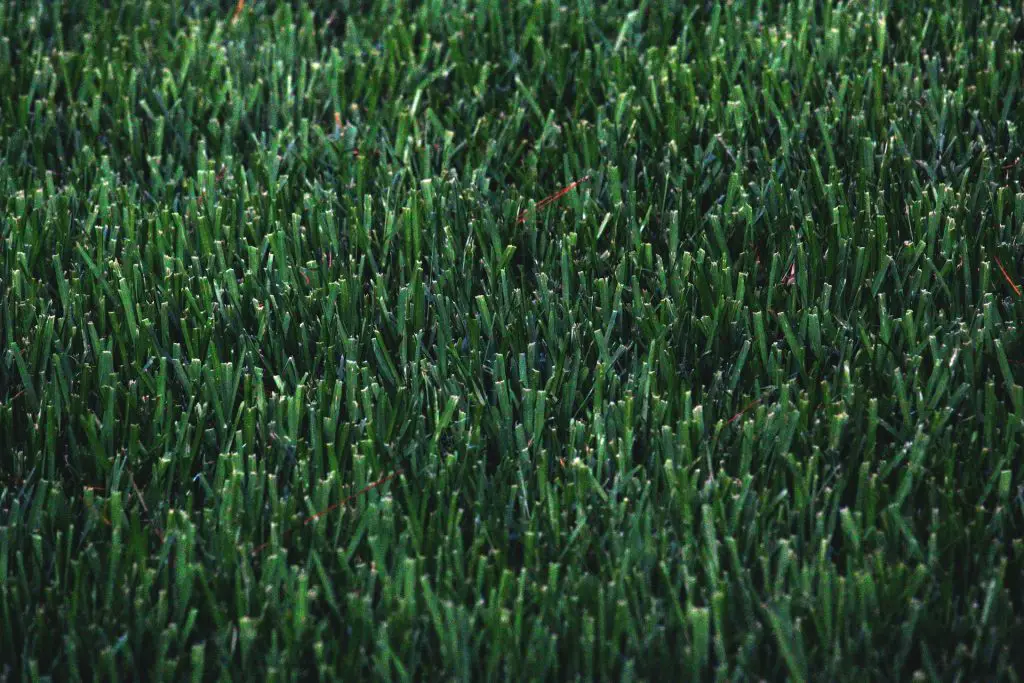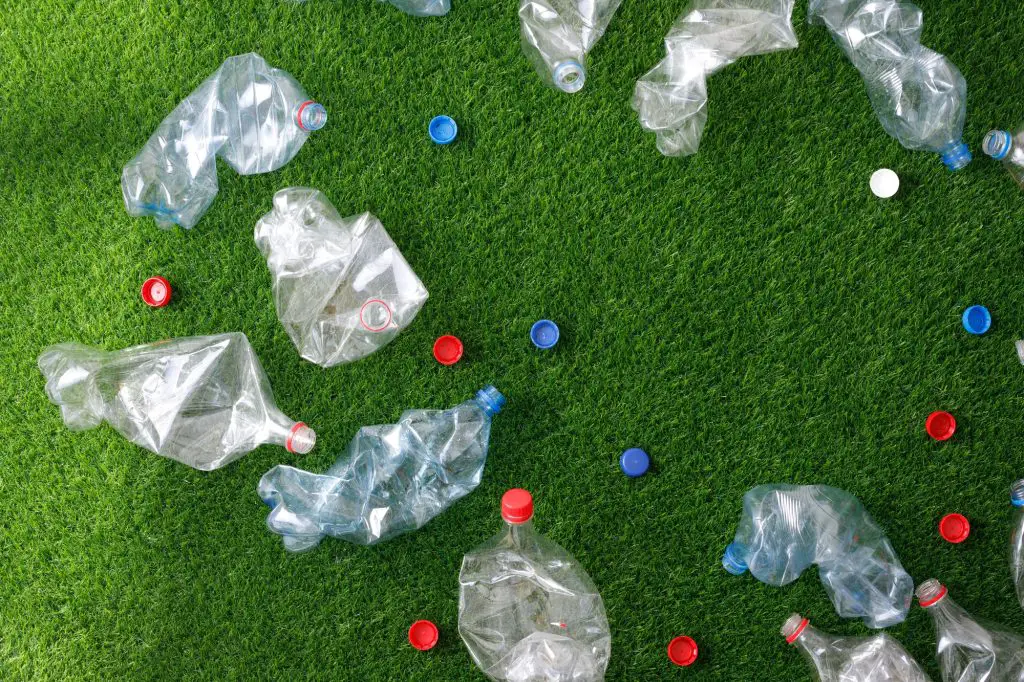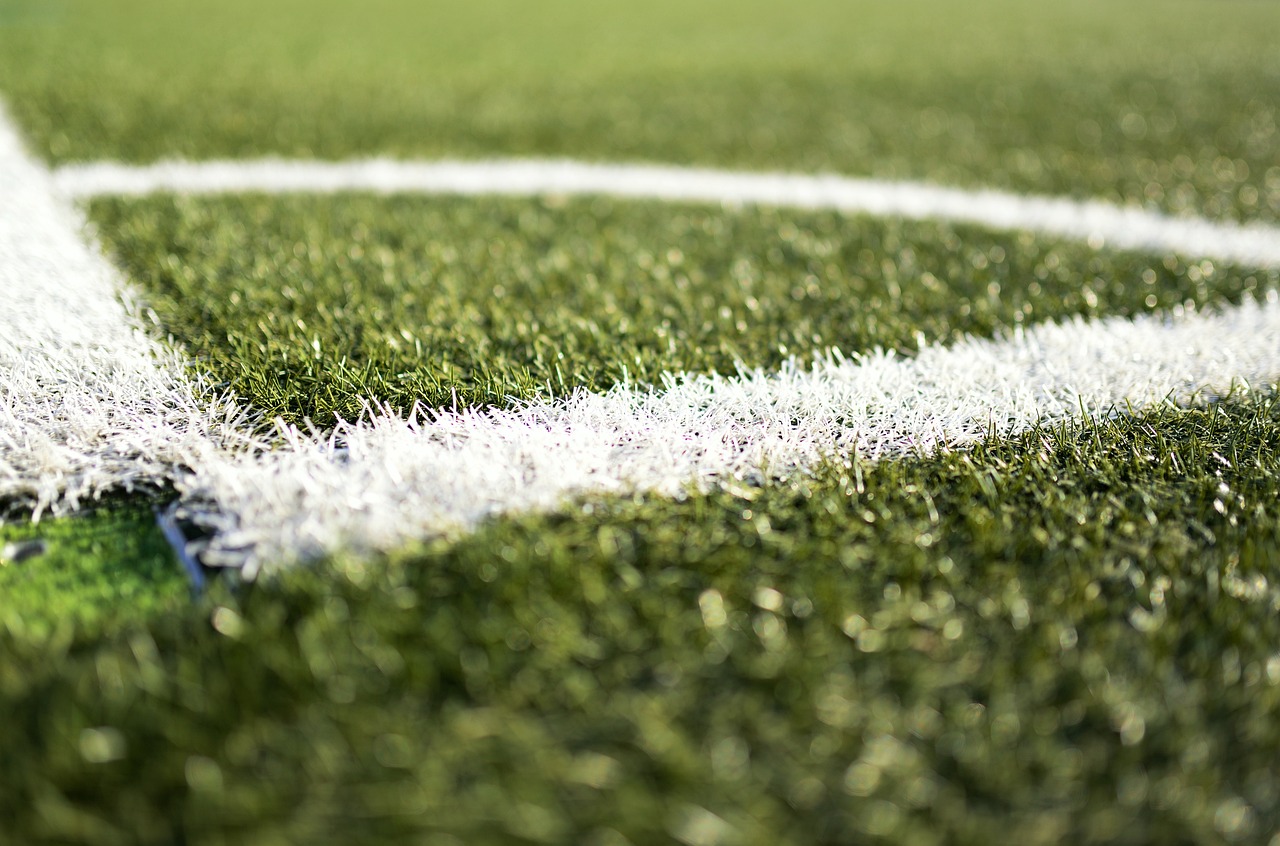Artificial grass is tempting due to its low maintenance requirements. However, while it may win out over natural grass in this area, does it last as long? In other words, just how long does artificial grass last?
Artificial grass lasts between 8 and 20 years. Factors affecting its longevity include the material its constructed from, its environment, proper installation, routine maintenance, and level of use.
What Artificial Grass Is And Why It’s Useful

Artificial grass or turf is a manufactured covering that looks like natural grass. Manufacturers construct it from various fibers, including nylon, polyethylene, and polypropylene. Bunches of these fibers are attached to a fabric backing.
Due to its durability and ease of maintenance, football stadiums, residential gardens, and play parks use artificial grass. Unlike natural grass, artificial grass requires no mowing, trimming, or feeding. You can use it year-round, and upkeep is minimal.
Average Lifespan Of Artificial Grass
The average lifespan of artificial grass ranges from 8 to 20 years, depending on factors such as the climate it’s installed in and what it’s used for. Sports fields may only last 8 to 10 years due to heavy wear and tear, but lawns in low-traffic conditions may last beyond 20 years.
How Artificial Grass’s Lifespan Compares To Natural Grass’s
While artificial grass may last as long as 20 years, natural grass may last anywhere from a few years to an entire lifetime. This variance depends on the grass species, the climate, and how well the owner maintains and waters it.
How To Maximize Artificial Grass’s Lifespan
Artificial grass should meet a few minimum requirements to enjoy the most extended lifespan. The Synthetic Turf Council (STC) recommends you install synthetic grass with a pile height (length of the blade above the backing material) of 1½ inches to 2 inches and a density of ¼ inch to ½ inch. This results in a total yarn weight of between 40 oz and 100 oz per square yard. A turf backing system of woven or non-woven fabric provides initial dimensional stability.
The initial dimensional stability relates to the blades’ ability to return to their original shape and position. Strong, resilient backing material helps this property considerably.
Depending on the application, this can be in single or multiple layers. More layers provide a more robust turf that lasts longer and resists harsh use, such as on sports fields. The STC’s minimum recommendation is a primary backing weight of 7 oz per square yard.
With a secondary backing that locks the fibers in place, your artificial grass should have a tuft bind of 6.8 lbs. Tuft bind refers to the force required to pull a tuft of grass out of the grass backing material. Force below 6.8 lbs means your artificial grass will degrade more quickly and not last as long as other, more robust products.
Factors Affecting Artificial Grass’s Lifespan

As with anything, a variety of factors affect artificial grass’s lifespan. These range from environmental conditions to proper installation. First, we’ll focus on artificial grass’s material construction.
The Material Its Made From
Manufacturers make artificial grass from nylon, polyethylene, or polypropylene. Of the three, nylon lasts the longest, polyethylene lasts the second longest, and polypropylene lasts the third longest. Nylon costs the most.
Proper Installation
While each manufacturer has their preferred installation method, the basic steps are the same. The better the area is cleared and prepared, the longer the grass will last. While we recommend hiring a professional installer for such a job, knowing the best practices for artificial grass installation is essential. These include:
- Clearing away vegetation, rocks, and debris
- Grading the lawn correctly for proper drainage
- Laying down a weed barrier
- Spreading infill over the artificial grass to provide additional support
Environmental Conditions
Well-designed, high-quality artificial grass can withstand a wide range of environmental conditions. So, consulting a professional body such as the Synthetic Turf Council or the Landscape Architecture Foundation is essential. By only dealing with registered professional installers, which these organizations can help you with, you will ensure they consider your local climate conditions before making recommendations.
There are many such conditions to consider. Let’s begin with sunlight and UV exposure.
Sunlight And UV Exposure
The intense sunlight and high UV exposure, especially in desert areas, may cause your synthetic turf fibers to degrade over time. With intense and prolonged sunlight, turf fibers break down more quickly. Installing UV-resistant artificial grass rated for your area helps avoid this issue.
Temperature And Heat
Heat-sensitive fibers make up artificial grass. Because of this, extreme temperatures can severely impact how long your artificial lawn lasts. Not only will the heat affect its resilience, but it will also soften the fibers, which causes them to fail to spring back to their original position. This leads to further damage when users trod on the fibers, flattening or breaking them.
Solving this problem requires artificial grass with adequate heat dissipation.
Also, Pennsylvania State University conducted a study to determine how they could reduce the temperature of artificial grass. They found that watering artificial grass in the morning achieved the desired result.
Another method of reducing turf temperature is using sand as an infill. Using sand as an infill reduces the surface temperature as the water evaporates.
Moisture And Rainfall
Drainage becomes an issue if you live in a region with high rainfall or excessive humidity. Poorly drained artificial grass may become moldy and develop mildew, which damages the backing material.
The best way to avoid these problems is to prepare the subsoil and sub-base with adequate drainage installed carefully.
Freezing Temperatures And Frost
Extreme, frozen conditions can disrupt the stability and performance of artificial grass. If the ground freezes, the sub-base expands, causing an uneven surface and damaging the artificial grass. Consult with or hire an experienced contractor, as they will ensure the sub-base is adequately stabilized to consider any extreme temperature fluctuations.
Essential Artificial Grass Maintenance

In the same way, you look after a natural lawn, artificial grass lawns require periodic maintenance and care. This includes a variety of steps, starting with removing unwanted and potentially damaging items from the grass.
Remove All Trash And Debris
Besides maintaining appearance, removing trash and debris prevents damage to artificial grass blades and backing material.
Remove Glass To Prevent Your Artificial Grass From Melting
Sunlight reflected through glass can melt turf. Artificial grass is made up of nylon, polypropylene, and polyethylene, so it can melt when exposed to high temperatures. Polyethylene melts when exposed to temperatures of as little as 221° to 239°F and polypropylene melts between 266° and 340°F. Nylon is more robust and melts between 347° and 365°F.
When you leave glass on the artificial grass, it can potentially concentrate the sun’s rays to the point that it reaches 1,800° F and more.
When Grooming Artificial Grass, Use A Hard-Fiber Brush
If infill covers your lawn, brushing the artificial grass will ensure the blades return to their correct position and evenly distribute infill around your yard.
Infill is a supporting material such as sand or tiny rubber balls spread over the artificial grass. As it is brushed in, it forms a layer at the base of the grass blades, absorbing impacts, providing cushioning, and improving sports traction. The infill also absorbs water and keeps the surface cool through evaporation.
When you walk or run across the artificial grass, it compacts and moves the infill. So, grooming is needed to rearrange the infill to keep it evenly spread across the whole lawn.
Clean Your Artificial Grass With Water
If you spill liquids on the grass, they may stain. Hosing your lawn with water is worthwhile to remove any fluid, pet urine, and other deposits. A sprinkler system is also good if you have a large property and wish to keep it cool and control dust and sand.
To maintain the integrity of your lawn, the drainage must also be looked after. Ensure there are no standing water areas, which can compromise the turf.
Prevent And Remove Weeds From Your Artificial Grass
Your contractor should lay a fabric weed barrier to prevent weed growth. But if you do have weeds growing on top of your lawn, then it’s crucial to remove them as soon as possible to avoid them growing too large and damaging the backing material.
Conclusion: How Long Does Artificial Grass Last?
On average, artificial grass lasts between eight and 20 years. Regular and thorough maintenance, along with proper installation, maximizes this lifespan.
So, what are your thoughts on how long artificial grass lasts? Were you surprised? Further questions? Let us know in the comments below!
